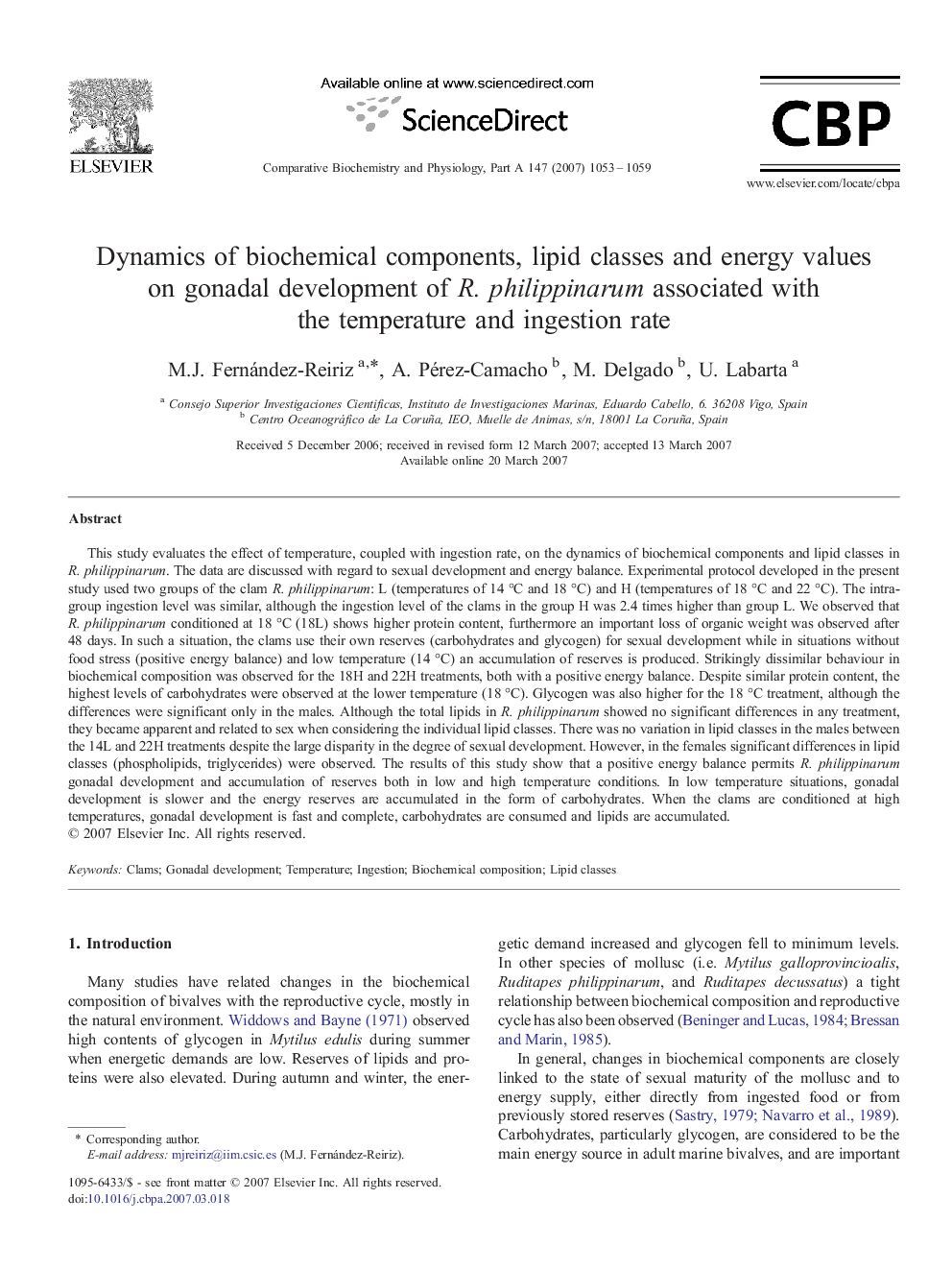| Article ID | Journal | Published Year | Pages | File Type |
|---|---|---|---|---|
| 1974800 | Comparative Biochemistry and Physiology Part A: Molecular & Integrative Physiology | 2007 | 7 Pages |
This study evaluates the effect of temperature, coupled with ingestion rate, on the dynamics of biochemical components and lipid classes in R. philippinarum. The data are discussed with regard to sexual development and energy balance. Experimental protocol developed in the present study used two groups of the clam R. philippinarum: L (temperatures of 14 °C and 18 °C) and H (temperatures of 18 °C and 22 °C). The intra-group ingestion level was similar, although the ingestion level of the clams in the group H was 2.4 times higher than group L. We observed that R. philippinarum conditioned at 18 °C (18L) shows higher protein content, furthermore an important loss of organic weight was observed after 48 days. In such a situation, the clams use their own reserves (carbohydrates and glycogen) for sexual development while in situations without food stress (positive energy balance) and low temperature (14 °C) an accumulation of reserves is produced. Strikingly dissimilar behaviour in biochemical composition was observed for the 18H and 22H treatments, both with a positive energy balance. Despite similar protein content, the highest levels of carbohydrates were observed at the lower temperature (18 °C). Glycogen was also higher for the 18 °C treatment, although the differences were significant only in the males. Although the total lipids in R. philippinarum showed no significant differences in any treatment, they became apparent and related to sex when considering the individual lipid classes. There was no variation in lipid classes in the males between the 14L and 22H treatments despite the large disparity in the degree of sexual development. However, in the females significant differences in lipid classes (phospholipids, triglycerides) were observed. The results of this study show that a positive energy balance permits R. philippinarum gonadal development and accumulation of reserves both in low and high temperature conditions. In low temperature situations, gonadal development is slower and the energy reserves are accumulated in the form of carbohydrates. When the clams are conditioned at high temperatures, gonadal development is fast and complete, carbohydrates are consumed and lipids are accumulated.
